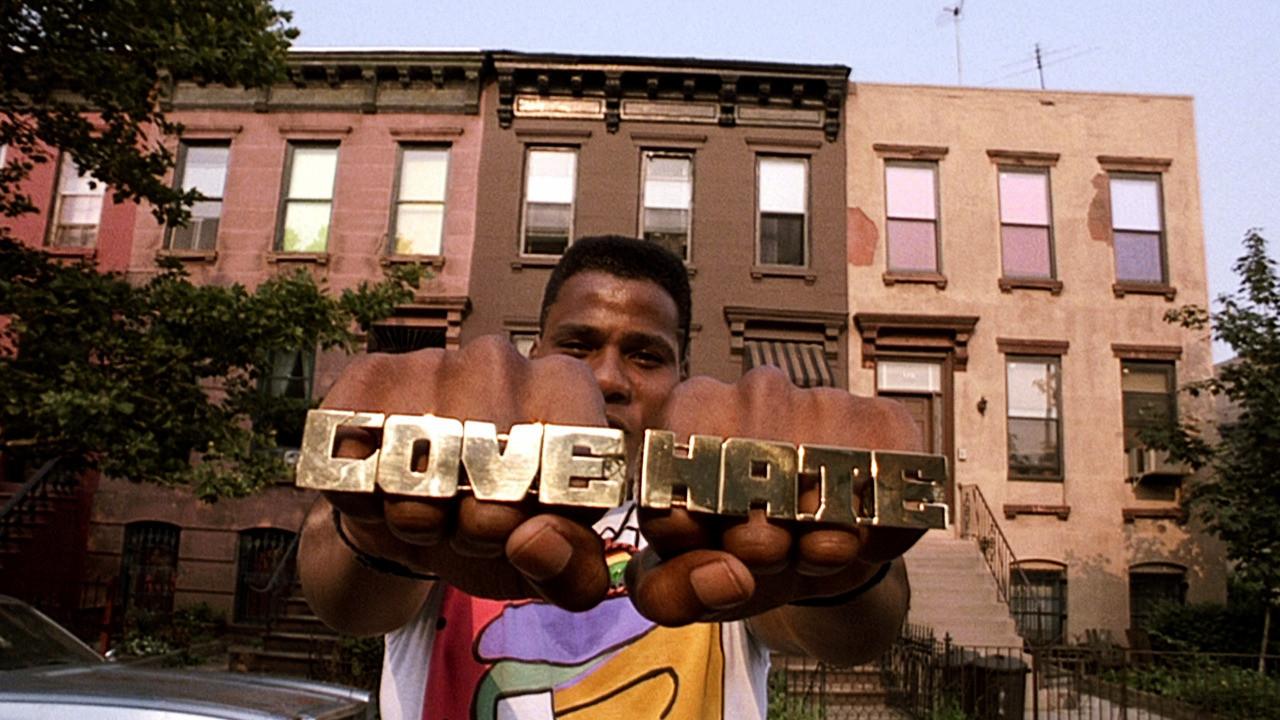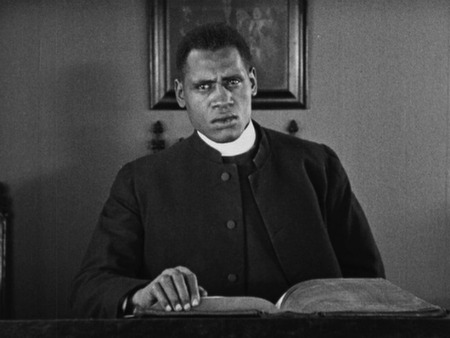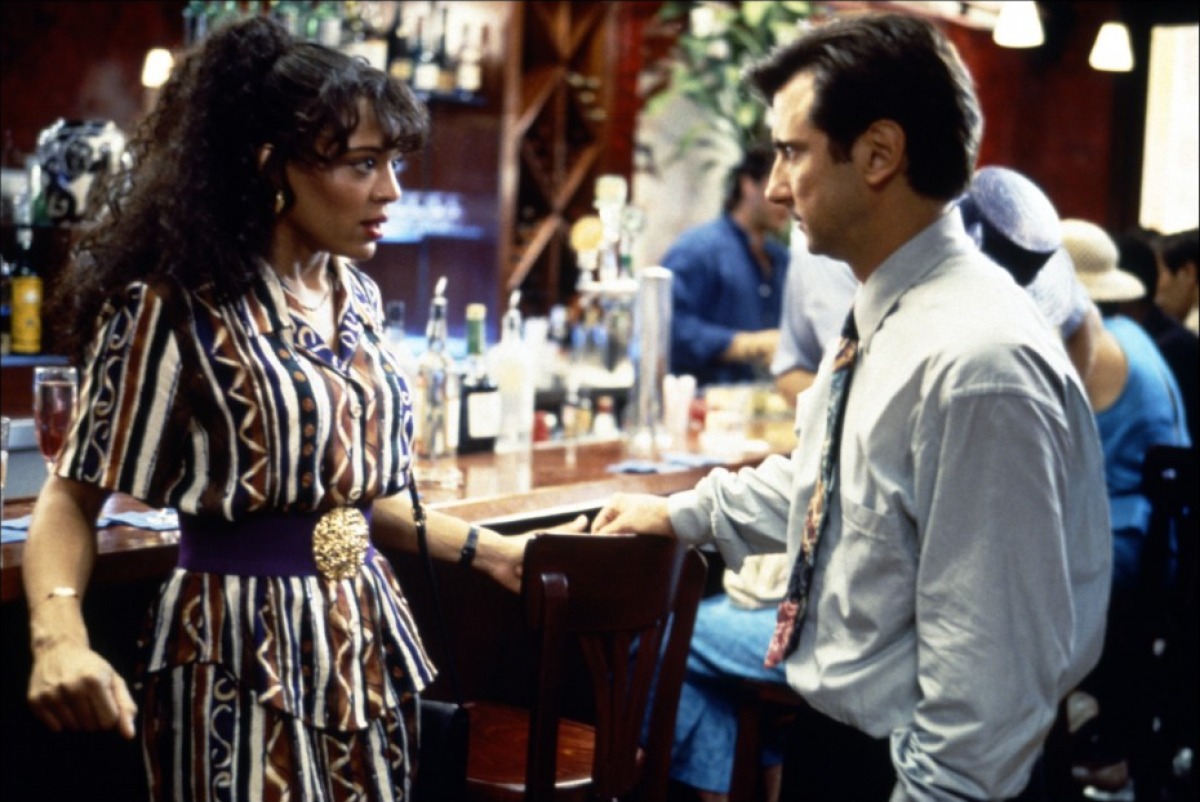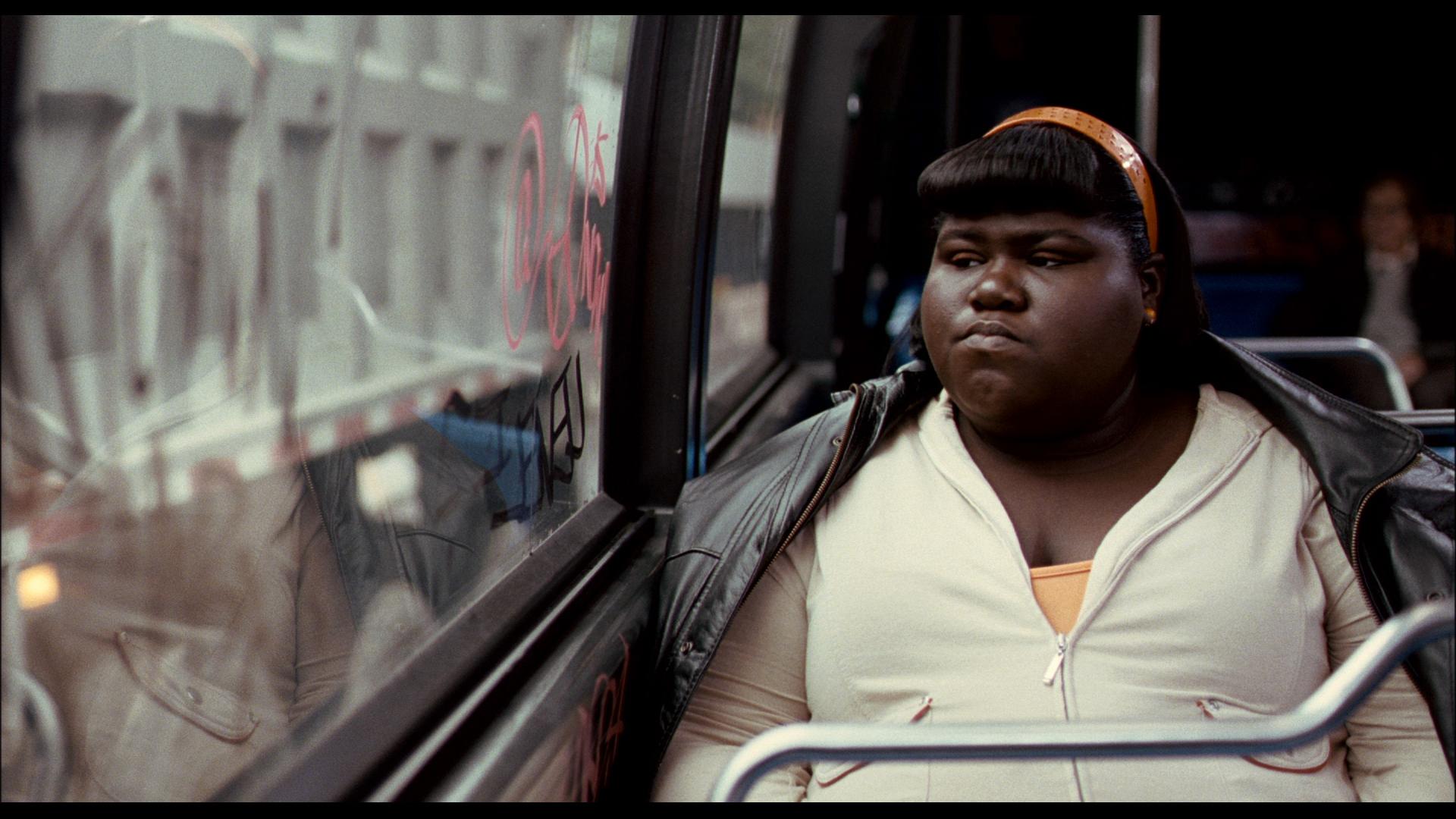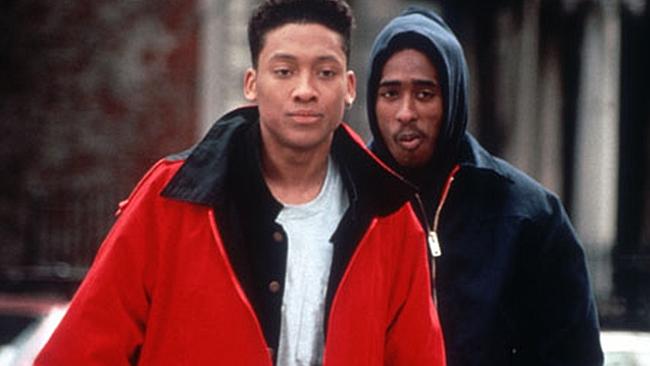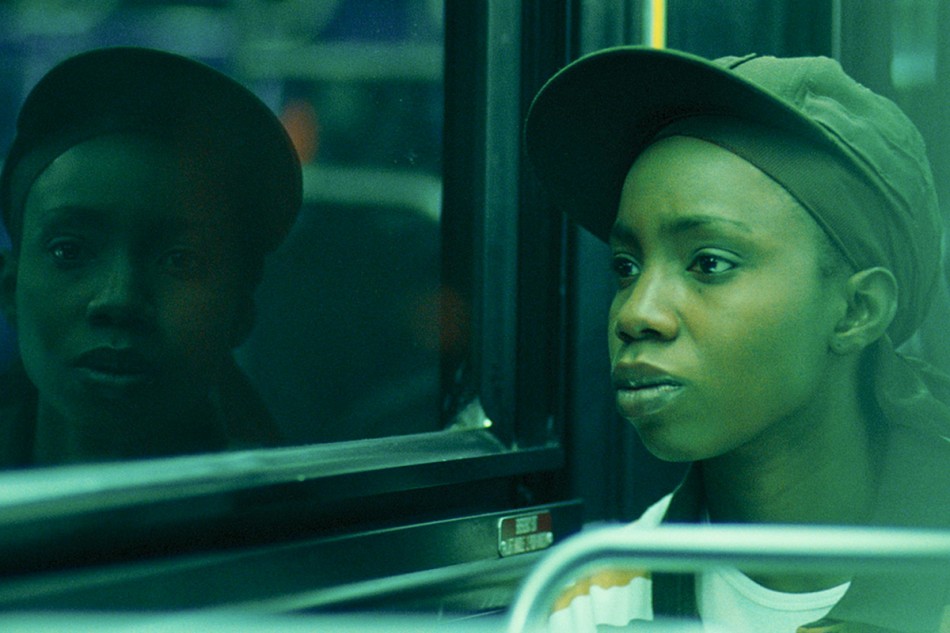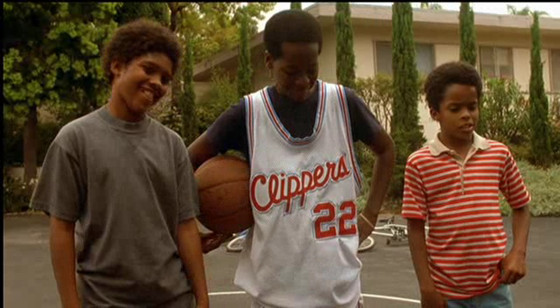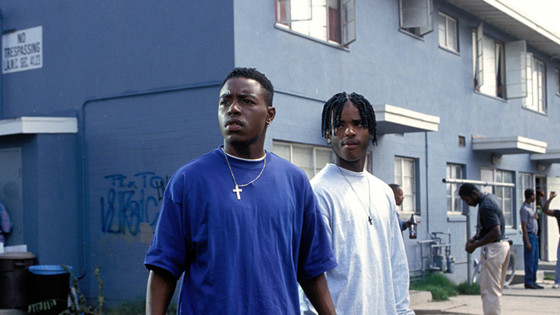During the silent era, where segregation was prominent, a small circuit of theaters for African Americans developed. The reason behind this was the multiple protests held by African Americans who wanted better representation in the motion picture industry. These uprisings were in part inspired by the controversial film The Birth of a Nation (1915), which featured the Ku Klux Klan as heroes and black people as villains.
Sporadic African American films were made during the late 1910’s, with very minimal success, often ending up as unknown short films. During the 1920’s, black roles were minimal and stereotypical, often limiting actors for characters that portrayed them as jokes and servants. These series of unfortunate events, in which African Americans could only watch movies designed for white audiences led to the rise of black filmmakers. The first of them being Oscar Micheaux, who made films regardless of his difficulties with the industry.
Oscar Micheaux set the stepping stones for future African American directors to eventually become part of the American film culture. Thus, after the black power and the civil rights movements in 1965, more opportunities emerged. Regardless of Spike Lee’s statement: “ Race was America’s biggest problem, always has been (since we got off the boat) and always will be.” their accomplishments proved that African American directors can also make powerful films.
15. Body and Soul (1925) by Oscar Micheaux
Body and Soul stars Paul Robeson as a malevolent minister in his feature film debut. He manipulates church goers with his sermons, taking advantage of this to rape their innocent daughters and steal their money. One of these victims happens to be Isabelle, the daughter of Martha, a devoted church member.
If this movie were released in a sensible society, it would have made Paul Robeson famous. His performance, even frightening at times, overpowers the rest of the cast ensemble. This is presented with close ups featuring sinister laughs while witnessing his sinful works. Other clever scenes depict moments that would possibly stir controversy. For instance, as he gave his sermon, he would not hesitate to secretly drink from a flask hidden under the pulpit. These character details are what made Oscar Micheaux such a great director, allowing a blazing performance by Paul Robeson.
14. I Like it Like that (1994) by Darnell Martin
Puertorrican couple Lissete (Lauren Velez) and Chino face marriage difficulties as he is sent to jail because of robbing a stereo from a local convenience store. This leaves the family with no income and loss of parental control over their children, ultimately leaving Lissete in a desperate situation. Not even their parents support them: Lisette’s mother is only focused on her own life while Chino’s mother, Rosaria, is too busy proclaiming her Castilian heritage. Lauren Velez manages to portray a character equipped with trouble yet with a spark of comedic relief. Rita Moreno is even featured in the cast as Rosaria.
This film made Darnell Martin, originally Spike Lee’s assistant director, the first African-American female to direct a film produced by a major film studio. Even if the film is centered around a harsh lifestyle, Martin makes this story about a woman attempting to maintain her marriage by focusing on her own success. This resilience towards life’s struggles is what makes Lisette a memorable character.
13. Precious (2009) by Lee Daniels
An independent film with a contrast of little known actors and superstars. It is a tale of an adolescent girl who has endured chronic emotional, physical and sexual abuse, yet manages to keep hope. Rather than a story of tragedy, it is one of empowerment, in which Precious overcomes her nightmarish journey and learns to see the beauty of life.
Set in Harlem circa 1987, sixteen year old Precious, pregnant with her second child, enrolls in an alternative school with hopes of a better future. Sadly, this is not the only problem she has to face. She was sexually abused by her father, has contracted AIDS, lives with a mother dependent on welfare who accuses her own daughter of “taking her man”, and her first child called Mongo has down syndrome. Additionally, she is often bullied because of her weight.
The movie was based on the novel Push which was written by a night school teacher who saw people living under these conditions. Nevertheless, this film is about the light at the end of the tunnel. Director Lee Daniels made the stars shine with amazing performances especially by Mo’Nique, whose powerful dramatization of a ruthless mother brought the character to life. She won a best supporting oscar and received a standing ovation at the ceremony. It also won Best Adapted Screenplay and was nominated in four other categories including best picture.
12. Juice (1992) by Ernest R. Dickerson
Four Harlem teenagers,Q, Bishop, Raheem and Steel find out on the news a friend was killed at a bar they had been minutes before. In order to redeem the friend’s life they decide to also rob a local store in their own pursuit of respect known as “the juice”.
This is a crime drama with a great cast including Omar Epps, Tupac Shakur, Samuel L. Jackson, and Queen Latifah. It is a reaction to movies that glamorize violence by demonstrating the consequences of trying to gain power by squeezing the trigger. Tupac portrays this character very well, confused, living in a society where opportunities lie scarce and only the fittest survive. Q, played by Omar Epps, has other dreams though. He has his eyes on winning a DJ contest, but peer pressure and the juice tempt him to the other side of the spectrum.
The director is a renowned cinematographer, the reason why the movie has some exquisite visuals, especially the DJ contest and the chase scene at the end. This focus on visuals does not limit the story’s potential, the director should also be given merit for developing a unique twist that separates this film from other crime dramas.
11.Pariah (2011) by Dee Rees
Pariah means being without status or name, the central conflict of the Brooklyn teenager Alike, the main character of the film. In a desperate attempt to find her own sexual identity, she struggles with her friends, her family, and even her own heart. She is presented as an ordinary straight A student who hides from her conservative family her homosexuality. Because of this, she must switch between roles at her home and school by changing clothes.
“Heartbreak opens onto the sunrise for even breaking is opening and I am broken, I am open. Broken into the new life without pushing in, open to the possibilities within, pushing out. See the love shine in through my cracks? See the light shine out through me? I am broken, I am open, I am broken open. See the love light shining through me, shining through my cracks, through the gaps. My spirit takes journey, my spirit takes flight, could not have risen otherwise and I am not running, I am choosing”
This is the poem that Alike reads for an AP English class. It clearly reflects the character’s inner turmoil throughout the film, and demonstrates her great ingeniousness at writing. It is incredibly beautiful of the director to portray such a strong character as it is, with a contemporary controversial problem that has yet to be accepted by society. It screams freedom all over, especially at the heart wrenching finale. Even if she did not manage to gain acceptance from everyone at her household, at the midst of being let down, she still finds freedom.
10. Love & Basketball (2000) by Gina Prince-Bythewood
An all-american sports film about scoring the heart. It is a four decade long love story between two basketball players whose passion for the game is the secret to each other’s soul. It is a double or nothing standard between Quincy (played by Omar Epps) and Monica (Sanaa Lathan).
What was great from this film was the character psychology, not only focusing on basketball nor the love dilemma, but the family situations as well. It proves to be very conflictive towards their future as a couple. Since the film starts with both protagonists as little kids, the influence of their parents is very much present. Quincy struggles with an untrustworthy father and Monica does not get enough support from her mother who sees her as a “tomboy”.
9. Menace II Society (1993) by Allen & Albert Hughes
Menace II Society provides intense experiences of adolescent hormonal rage against circumstances powerful enough for surrendering to the narrative. It’s unflinching look at the despair and hopelessness of the young black male urban reality leaves aghast any spectator who presences it.
Caine, a young street hustler, appears to have nothing to live for, a pre existentialist cut a drift by nature itself. He attempts to escape the temptations of the ghetto in order to have a better life with his mentor’s girlfriend and son. The film makes no attempt with embellishing hallmark qualities to this gruesome reality. It includes brutal beatings and graphic bloody shootings often stylized with slow motion techniques and impressive camera maneuvering.
The Hughes brothers also did a brilliant job directing the ensemble cast. Larenz Tate, who dramatized O-dog, is essentially the highlight of the opening scene of the movie. He clearly has a lack of conscience as he murders the Korean shopkeepers of the store without any guilt.
Caine’s character, who was played by Tyrin Turner, is the contrast of this behavior. He manages to graduate out of high school and has people who believe in him, but his upbringing and environment does not help him understand that there are other paths in life. The film presents society as the real menace, rather than these men, as it stirs away from the tradition of happy endings.
